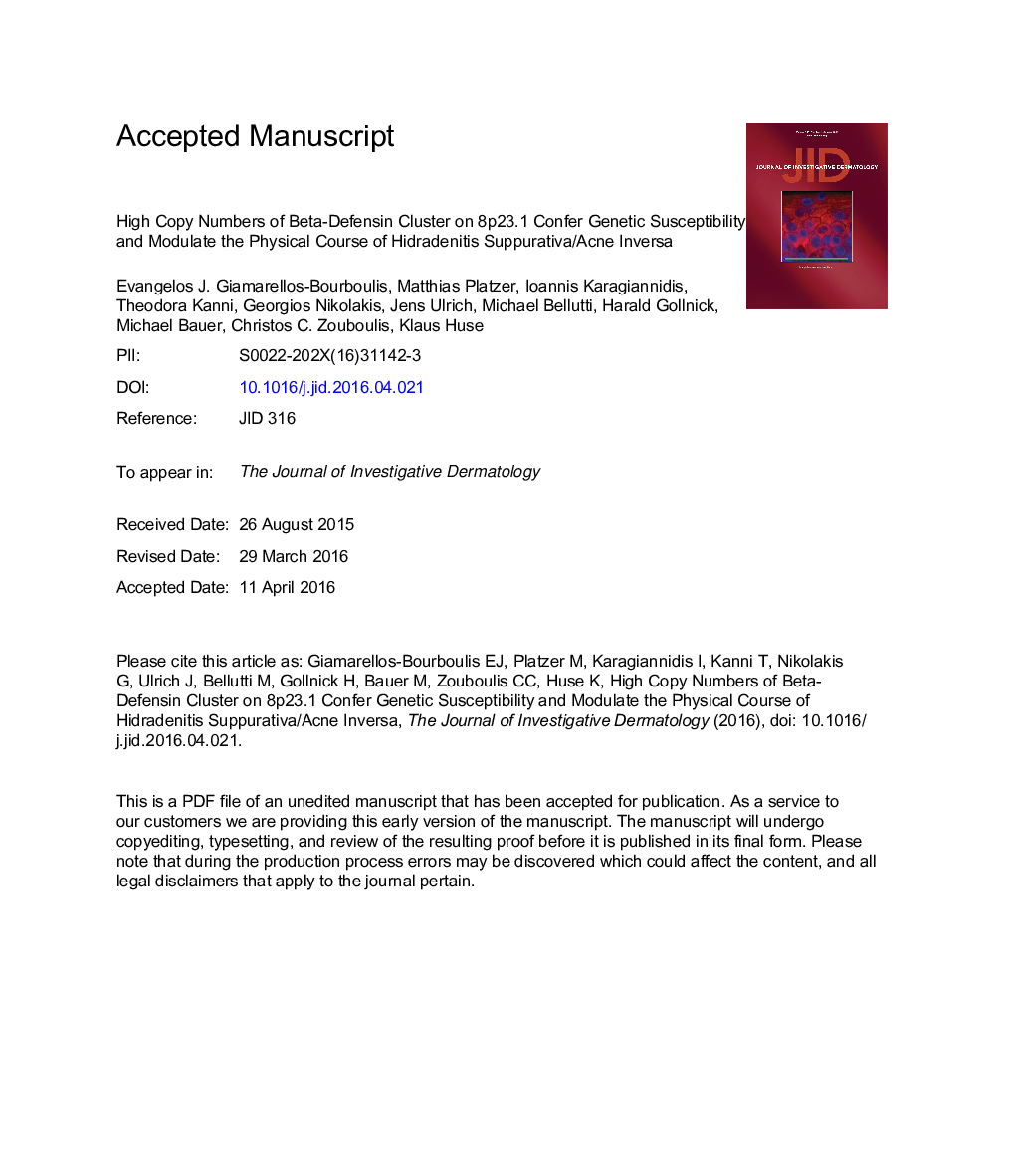| Article ID | Journal | Published Year | Pages | File Type |
|---|---|---|---|---|
| 6074497 | Journal of Investigative Dermatology | 2016 | 29 Pages |
Abstract
Hidradenitis suppurativa/acne inversa (HS) has a multifactorial pathogenesis, with many patients reporting positive family history. Nine β-defensin genes (among them DEFB4 and DEFB103, encoding for proinflammatory mediators human β-defensin-2 and human β-defensin-3, respectively) exist as a cluster (DEFB) affected by copy number (CN). We hypothesized that CNs are greater in patients with HS and that they are linked to genetic susceptibility. CNs of DEFB were studied in two independent patient cohorts: 163 patients from Greece and 98 from Germany. CNs were greater in patients than control subjects in both studied cohorts. Carriage of more than six CNs was associated with a 7.53 odds ratio for HS in the Greek cohort and a 5.76 odds ratio for HS in the German cohort. The common odds ratio after meta-analysis was 6.72 (P < 0.0001). However, presence of fewer than six copies was linked with disease onset at an earlier age (P = 0.048), less frequent presentation of permanent purulence of the affected skin lesions (P = 0.036), and fewer skin localizations (P = 0.042). A robust genetic trait for susceptibility to HS is provided, and this is confirmed in two independent cohorts. Susceptibility arises from carriage of more than six DEFB copies, which interferes directly with the HS phenotype.
Related Topics
Health Sciences
Medicine and Dentistry
Dermatology
Authors
Evangelos J. Giamarellos-Bourboulis, Matthias Platzer, Ioannis Karagiannidis, Theodora Kanni, Georgios Nikolakis, Jens Ulrich, Michael Bellutti, Harald Gollnick, Michael Bauer, Christos C. Zouboulis, Klaus Huse,
